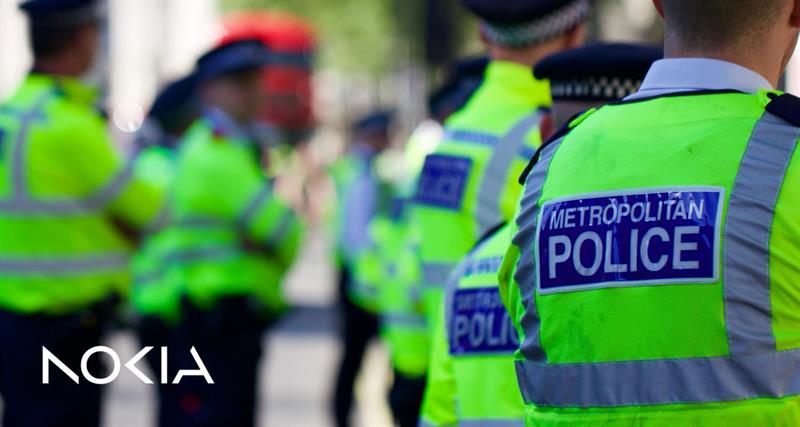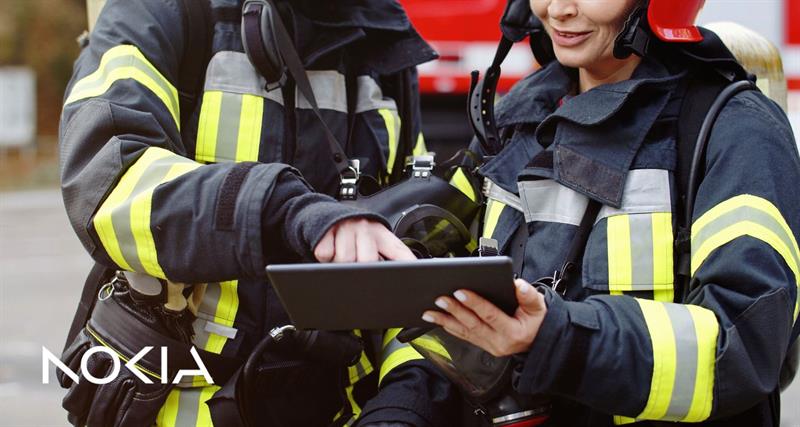Between 1970 and 2019, the world saw a fivefold increase in life-threatening environmental disasters. But over that same timeframe, thanks to improvements made to early warning systems and disaster management practices, the number of people saved from natural disasters nearly tripled — a testament to the life-saving potential of innovation in critical communications.
Drones, wearable devices and other technologies have made a considerable impact in recent years, and emerging innovations like the industrial metaverse will present even more opportunities to save lives through better situational awareness and enhanced training of frontline personnel and first responders. Beyond this promise, these innovations will also be essential to overcoming the challenges that are putting new levels of pressure on public safety agencies. These include not only the increase in extreme weather events caused by climate change, but also the growth in homelessness and crime brought by current socio-economic conditions, as well as a new era of increasingly complex cybercrime and even cyberattacks enabled by AI-enhanced tools.

As they face these new challenges, labor shortages are requiring public safety agencies to find ways to do more with less. Technology can help by boosting the capacity and capabilities of their existing teams. But to get there, public safety agencies must first modernize their communications infrastructure to drive innovation and support advanced solutions. Given the potential of those technologies to help save lives, the sooner the better.
Improving situational awareness and safety
Information is paramount in an emergency. The more public safety agencies have, the better they can coordinate first responders to avoid hazards and rescue individuals as fast as possible. By integrating rich media and multiple data sources into their command-and-control center operations, agencies can gain unprecedented insight and visibility into emerging situations — giving them the means to create more effective response plans and change course as circumstances evolve.
Drones equipped with cameras and thermal sensors can monitor large public gatherings from up high or survey disaster scenes to find people in need of rescue. Wearable sensors can monitor responders’ precise movements and locations, as well as transmit vital health data to operators to indicate if personnel need help or have to be extracted from the situation.
Robotic dogs, equipped with immersive 360-degree video and 3D spatial audio can be sent into high-risk environments to assess conditions and detect dangers, such as explosives, before human responders set foot on the scene. Technologies like these give remote operators a better understanding of the conditions than voice communications or traditional surveillance cameras ever could provide. Nokia’s Real-time eXtended Reality Multimedia is using this technology in one of the first deployments of the industrial metaverse to enhance situational awareness in critical situations and facilitate remote response strategies.

Taken together, all of these technologies can tell public safety agencies such crucial things as how to safely move through a burning building, or detect a wildfire in a remote forest far from human contact and how upcoming weather forecasts might impact its spread. These new levels of situational awareness can also be applied to further improve early warning systems. For example, the Nokia Bell Labs Environmental Monitoring platform brings together intelligent sensing, network connectivity and cloud analytics to create effective early warning solutions. It can detect particulate matter, volatile organic compounds, heat, moisture, air quality, carbon dioxide, carbon monoxide and more on an always-connected, easy to deploy, zero-maintenance, solar-powered platform.
In another example of advanced early warning solutions, cities can use LTE-enabled drones in response to natural disasters such as earthquakes and tsunamis. Fully automated drones sound alarms, issue evacuation orders and fly in a swarm to the scene, surveying with thermal cameras to assess the situation and locate people in need. Because the drones operate over a private wireless network, they can function even if the public network is down, which can be common during disasters if public telecommunications infrastructure is impacted or concerned citizens flood public network capacity.
Enhancing training and operations
Innovations like the industrial metaverse, virtual/augmented reality (VR/AR) and digital twins can do more than inform responses and reactions when disasters strike. They can also help public safety agencies improve how personnel are trained and prepared well in advance.
VR/AR makes it possible to safely prepare response units for situations they are likely to encounter in the field but would be difficult or dangerous to simulate for training purposes. This could include a cyberattack on a critical communications network, a large-scale natural disaster or a hazardous waste spill in a factory. All are worst-case scenarios that can now be simulated virtually to improve preparedness.
Operationally, agencies can also optimize their systems and processes using digital twins. A digital twin is a virtual replica of a real-world entity, whether it’s an object, system or process. For example, by using digital twins, agencies can prototype process changes to optimize and refine their operation, but they can do so in a virtual environment without impacting other key areas like investigations, public contact and prevention work.
Enabling life-saving innovation
With the challenges facing the public safety sector growing ever larger and more complex, it is crucial that public safety agencies start adopting the technologies today that will improve situational awareness and emergency communications. The trouble is that many agencies are currently using foundational technologies built before the era of rich data and media.
The foundational public safety communications infrastructure is the lifeblood of the advanced systems of the digital era. To benefit from the potentially lifesaving innovations available now as well as those that are on their way, agencies will first need to modernize their legacy communications infrastructure. This means moving away from voice-centric mission-critical communications and implementing advanced networks that deliver the bandwidth and speed needed for rich communications and media, and that are also flexible enough to enable a broad range of innovative digital applications.
To enable the public safety sector to capture the benefits of the digital era, Nokia is advancing developments in mobile and transport networks, cybersecurity, non-terrestrial-networks and even 6G to further support public safety agencies around the world with the mission-critical connectivity they need to address the challenges of today and tomorrow, saving more lives and protecting our communities now and into the future.



